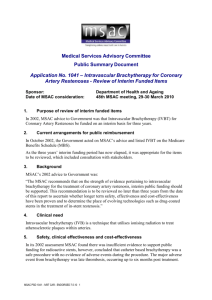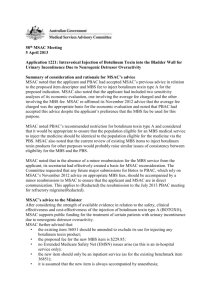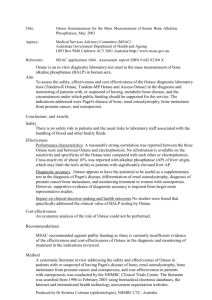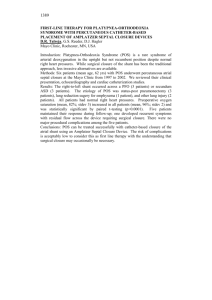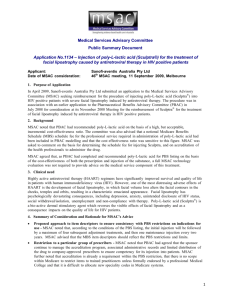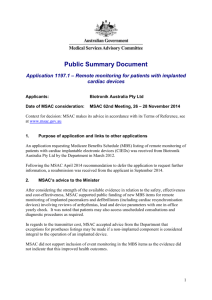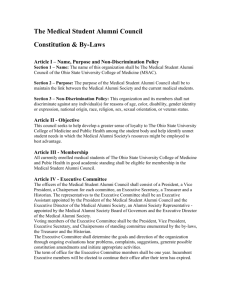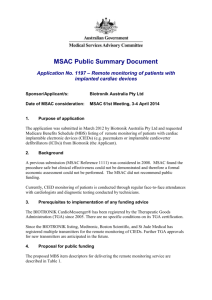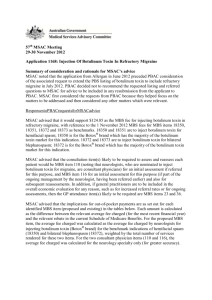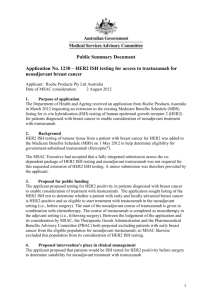59th MSAC Meeting 1 August 2013 Application 1330
advertisement
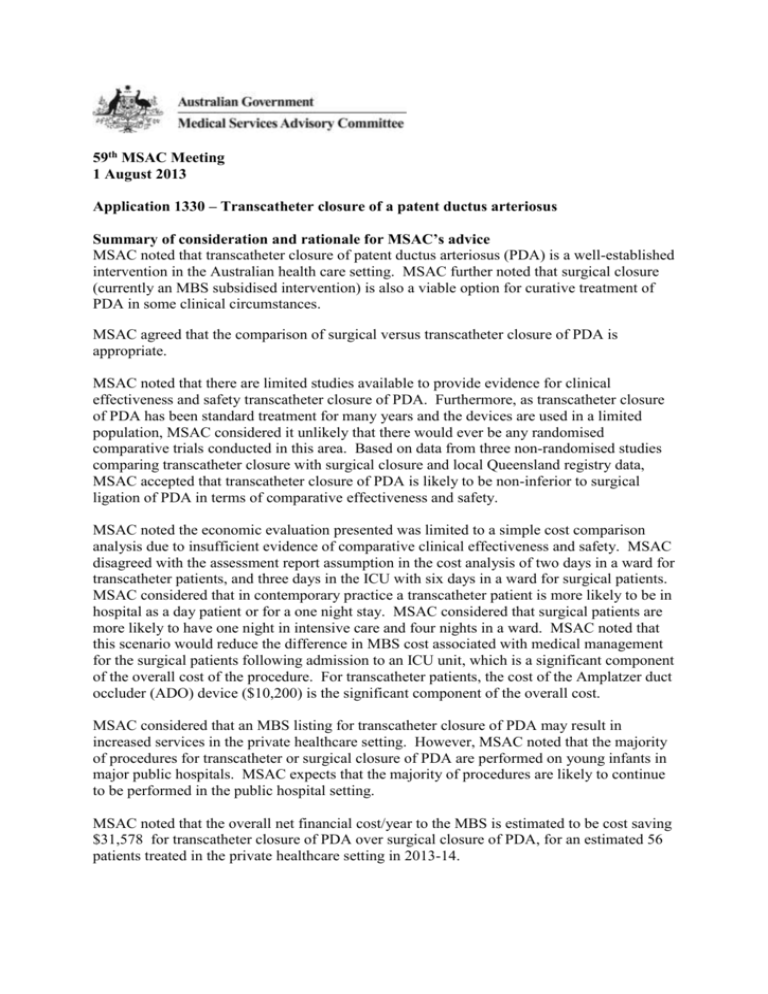
59th MSAC Meeting 1 August 2013 Application 1330 – Transcatheter closure of a patent ductus arteriosus Summary of consideration and rationale for MSAC’s advice MSAC noted that transcatheter closure of patent ductus arteriosus (PDA) is a well-established intervention in the Australian health care setting. MSAC further noted that surgical closure (currently an MBS subsidised intervention) is also a viable option for curative treatment of PDA in some clinical circumstances. MSAC agreed that the comparison of surgical versus transcatheter closure of PDA is appropriate. MSAC noted that there are limited studies available to provide evidence for clinical effectiveness and safety transcatheter closure of PDA. Furthermore, as transcatheter closure of PDA has been standard treatment for many years and the devices are used in a limited population, MSAC considered it unlikely that there would ever be any randomised comparative trials conducted in this area. Based on data from three non-randomised studies comparing transcatheter closure with surgical closure and local Queensland registry data, MSAC accepted that transcatheter closure of PDA is likely to be non-inferior to surgical ligation of PDA in terms of comparative effectiveness and safety. MSAC noted the economic evaluation presented was limited to a simple cost comparison analysis due to insufficient evidence of comparative clinical effectiveness and safety. MSAC disagreed with the assessment report assumption in the cost analysis of two days in a ward for transcatheter patients, and three days in the ICU with six days in a ward for surgical patients. MSAC considered that in contemporary practice a transcatheter patient is more likely to be in hospital as a day patient or for a one night stay. MSAC considered that surgical patients are more likely to have one night in intensive care and four nights in a ward. MSAC noted that this scenario would reduce the difference in MBS cost associated with medical management for the surgical patients following admission to an ICU unit, which is a significant component of the overall cost of the procedure. For transcatheter patients, the cost of the Amplatzer duct occluder (ADO) device ($10,200) is the significant component of the overall cost. MSAC considered that an MBS listing for transcatheter closure of PDA may result in increased services in the private healthcare setting. However, MSAC noted that the majority of procedures for transcatheter or surgical closure of PDA are performed on young infants in major public hospitals. MSAC expects that the majority of procedures are likely to continue to be performed in the public hospital setting. MSAC noted that the overall net financial cost/year to the MBS is estimated to be cost saving $31,578 for transcatheter closure of PDA over surgical closure of PDA, for an estimated 56 patients treated in the private healthcare setting in 2013-14. MSAC agreed that the technique involved in the procedure and the devices utilised most closely resemble those of MBS item 38272 which covers transcatheter closure of atrial septal defect (ASD). Therefore, the proposed MBS fee should be consistent with MBS item 38272 and the proposed descriptor should include associated services such as imaging and cardiac catheterisation which may be performed at the same time of the procedure. MSAC’s advice to the Minister After considering the strength of the available evidence in relation to the safety, clinical effectiveness and cost-effectiveness of transcatheter closure of PDA, MSAC supports public funding via a new MBS item, with an MBS fee of $912.30 and an item descriptor of: Category 3 – Cardio-Thoracic PATENT DUCTUS ARTERIOSUS, Transcatheter closure of, including cardiac catheterisation and any imaging associated with the service (Anaes.) (Assist.) Fee: $912.30 Benefit: 75% = $684.25
